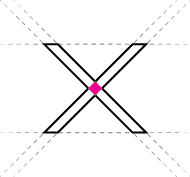Cyborgs (real lab RESEARCH + depositor)
extracted realtime surfaces and countours
Depositor, scanning the topographic features of the landscape and depositing sediments to re-route the flow of water
Processing Interface
scanned 3D Point Cloud
On-going Research, in collaboration with Bradley Cantrell | Summer 2015, Fall 2015, Spring 2016, FALL 2016
Siteless
Visualizations produced for Responsive Environments and Artifacts Lab (REAL at Harvard GSD), ADV-920153: Synthetic Natures: Towards an Alternative Understanding of the ‘Natural’ (Independent Study) and SCI-6246: Cyborgs Coasts: Responsive Hydrologies.
A probe in relation to my graduate thesis in the MLA program at Harvard University-Graduate School of Design
--
Rejection of the dichotomous image created by ‘the manmade’ and ‘the idealized’ untouched image of Nature was brought on by technological advancements humans developed for modifying all known Natures.
Such production brings upon an anxiety as to what was once natural. Through our ability to create and conceptualize hybrids of biotic and abiotic systems, we have also facilitated the evolution and image of novel ecologies. Furthermore, design is consistently introduced to “tame” newly-ostracized biologic systems to human will. To legitimize uncanny creations, humans find and extract any economic and practical capacities. However, despite levels of human control, there is always a moment in which a system will fail.
Today’s systemic failures, re-situate novel ecologies in the contemporary realm of “uncontrolled environments.”
Can responsive systems learn from the living landscapes? Can sentient machines mitigate foreseeable systemic failures, as well as facilitate the emergence of novel ecologies?
This thesis incorporates the design of a machine that will learn from initial site conditions, but also from modifications it will produce independently. The landscape machine will eventually become sentient, freeing itself from man’s control. Autonomously, it will act as a non-subjective author—constantly altering and modifying landscapes, privileging the evolution of ecology over static constructions. Future landscape designers will be creators of autonomous, human-value reinforcing machine because, as individuals, we have lost touch with our ability to negotiate the complexities of our relationships with non-human actors throughout all of earth’s landscapes.
A shift in what has become the accepted norm concerning ecology is necessarily upon us.
Processing Diagram (Feedback Loop)
Summer 2015 initial lab set up





